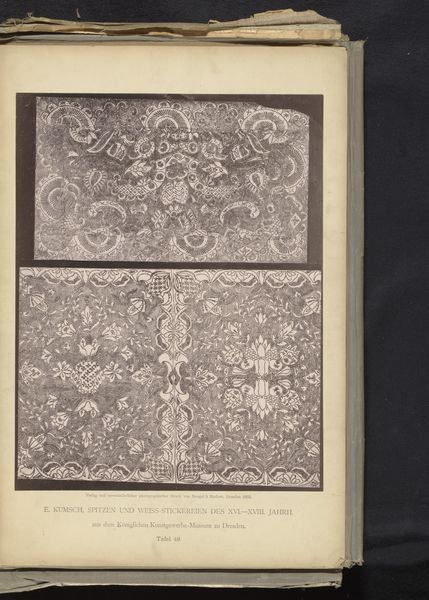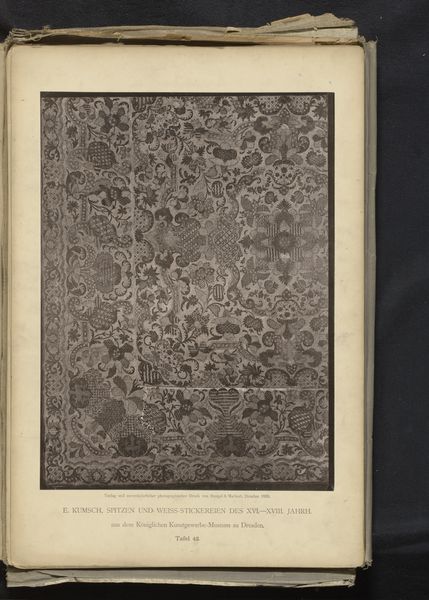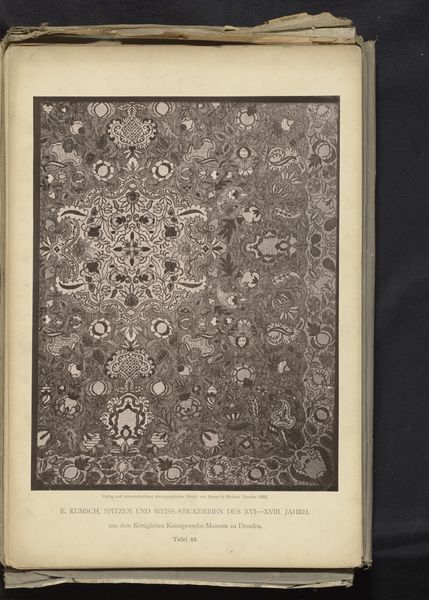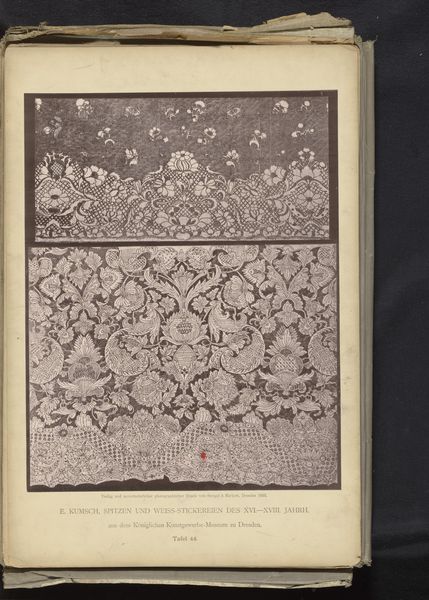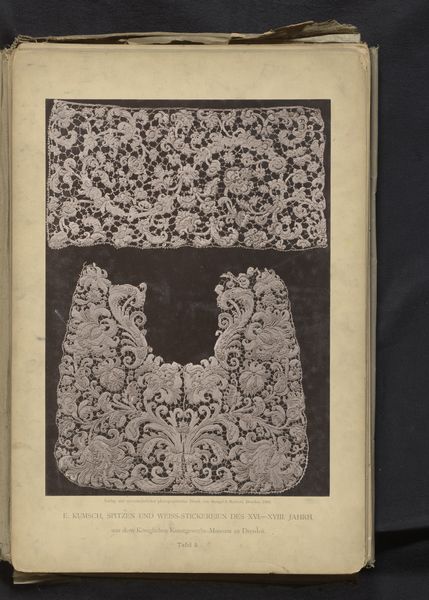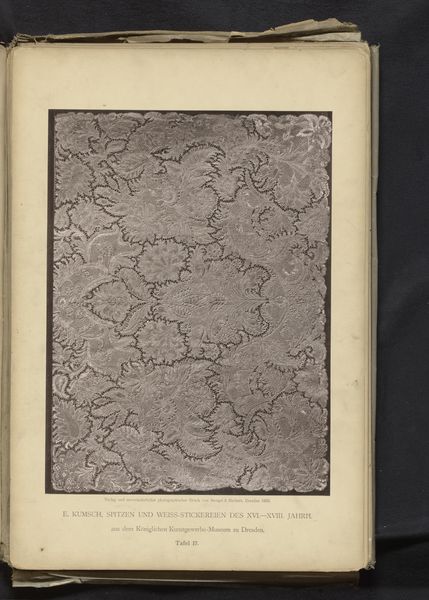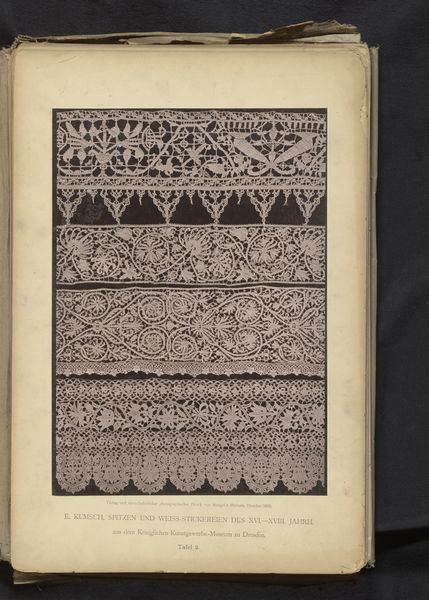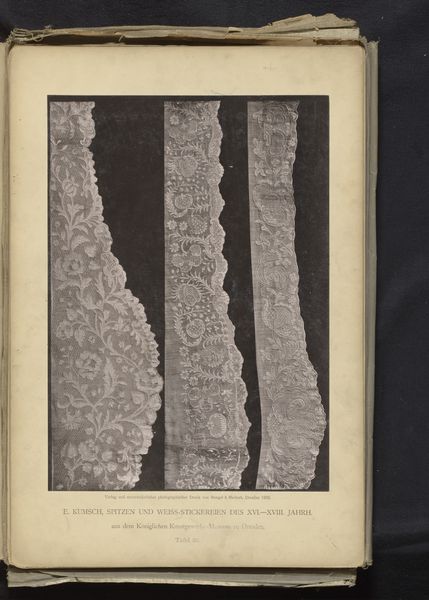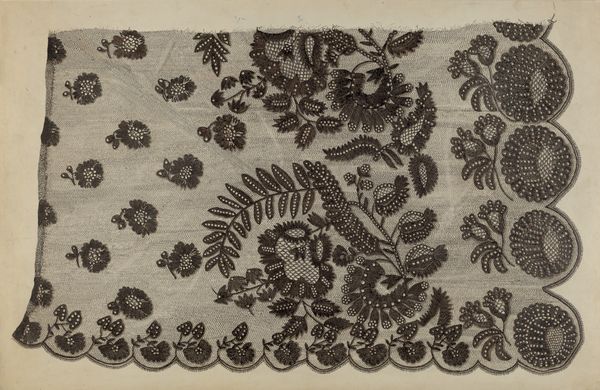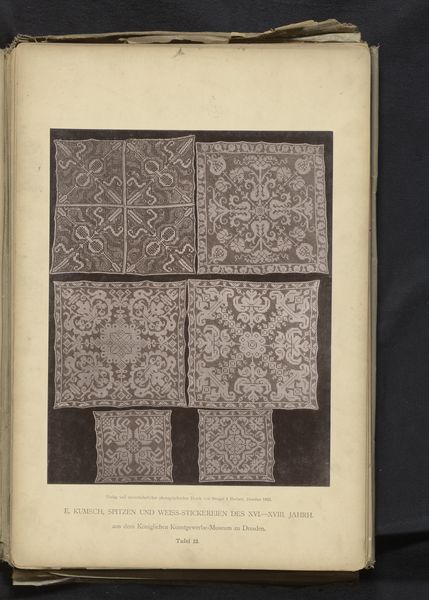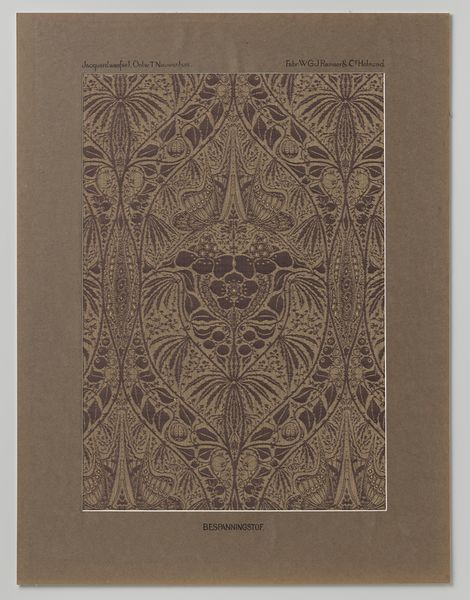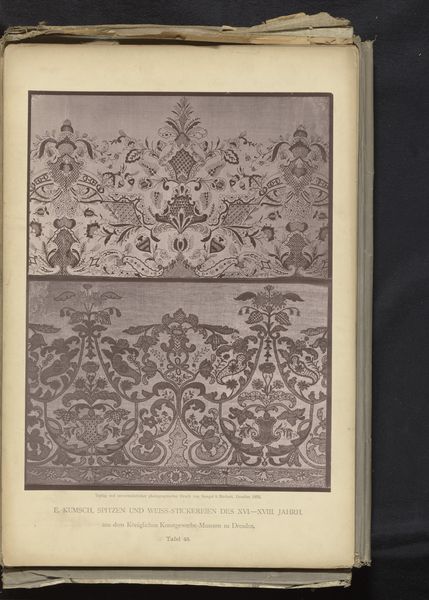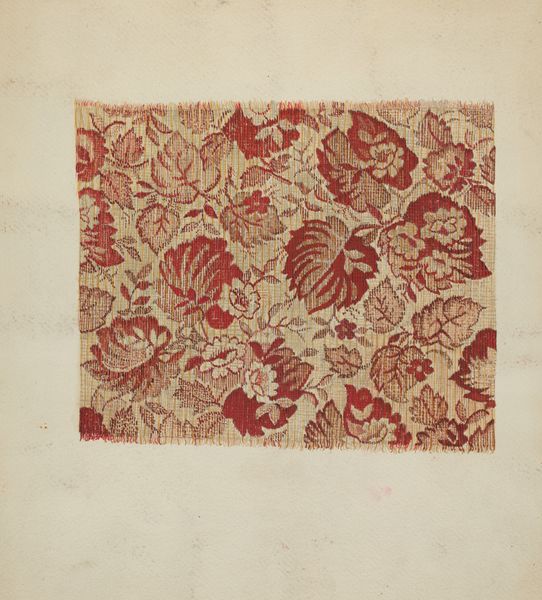
Drie stukken 18de-eeuws Duits borduurwerk uit de collectie van het Kunstgewerbemuseum in Dresden, Duitsland 1888
0:00
0:00
anonymous
Rijksmuseum
print, weaving, textile, photography
#
still-life-photography
# print
#
weaving
#
textile
#
photography
#
decorative-art
#
historical font
Dimensions: height 333 mm, width 287 mm
Copyright: Rijks Museum: Open Domain
Curator: I must admit, these reproductions are a feast for the eyes, the detail is simply exquisite. Editor: Immediately, I’m drawn to the tactile nature of these embroideries, or rather, the *impression* of tactility. One can almost feel the texture, the meticulousness...the labor. Curator: Indeed! What we’re viewing is a photographic print from 1888, entitled “Drie stukken 18de-eeuws Duits borduurwerk uit de collectie van het Kunstgewerbemuseum in Dresden, Duitsland," housed right here at the Rijksmuseum. It depicts three separate samples of 18th-century German embroidery. Editor: Considering these are documented samples and designs within a photograph of weaving, textile, and decorative arts – are these original works meant to inform subsequent makers with existing historical information? Or more likely, the modern viewer interpreting the final result here is meant to receive pleasure or understand utility from them? I can't shake the feeling the end purpose here is decorative, a document intended to enhance visual appearance first and foremost, before deeper contextual appreciation. Curator: Well, if you analyze the patterns in terms of semiotics, you will notice a visual language based upon the decorative trends that point towards complex systems of meanings understood by both the artisan and patron of the period. Each design communicates themes relating to the social or economic class as well. Editor: The production value must be immense – think of the working class that did the bulk of sewing labor, then being appropriated within elite patronage and economic production! It makes you wonder about the state of female authorship in an era where labor was hidden through aristocratic endorsement. These social factors must weigh heavily when discussing the final product in any meaningful way! Curator: Agreed, of course. The original function of these pieces as interior decor speaks volumes about 18th-century aesthetics as well. There is such attention to composition... notice the carefully considered symmetry in each. It’s more than mere ornament; it’s structured, purposeful design. Editor: So much can be overlooked if only judging based on decorative appearance. Thanks to this historical photography print – viewers can examine German cultural traditions under renewed critical scrutiny! Curator: A perfect example how decoding visual components can lead us to question the social context. Editor: Precisely.
Comments
No comments
Be the first to comment and join the conversation on the ultimate creative platform.
